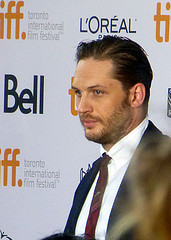Share This Article:
Return to Silver Screen Central Home page


Leonardo di Caprio may finally get that elusive Oscar for The Revenant
B+If acting Oscars were awarded for physical suffering, Leonardo DiCaprio would be a shoo-in this year for his performance in The Revenant. The actor endured lengthy outdoor shoots in temperatures well below zero in the Canadian Rockies and still delivered one of the better performances of his career. It appears Oscar voters have noticed. Barring a major upset, DiCaprio is poised to finally win the Oscar, while director Alejandro G. Inarritu may well join DiCaprio onstage for his second consecutive Oscar win.
The Revenant is the story, based on actual events, of Hugh Glass (DiCaprio), an 1820’s frontiersman acting as a guide for a party of fur trappers. After most of the trappers are killed in a raid by native Americans, Glass himself is attacked by a grizzly bear and later left for dead by his remaining companions. Glass isn’t dead however, but instead makes his way some 200 miles across rugged country to catch up to his former party. Glass is driven by the desire for revenge against John Fitzgerald (Tom Hardy), the trapper who was supposed to stay with Glass until he died but who, instead, tried to kill him and did succeed in killing his son (Forrest Goodluck).
As depicted by Inarritu and cinematographer Emmanuel Lubezki, the northwest frontier of that era is a sometimes stunningly beautiful but often brutal environment whose various inhabitants—Americans, French, and Native Americans—are all capable of extreme savagery. Inarritu succeeds in The Revenant in showing just how incredible Glass’s feat actually was. Along his way back, Glass eats raw buffalo meat, finds shelter inside the hollowed out carcass of a dead horse, and rides for miles down whitewater rapids to avoid pursuers. Leonardo DiCaprio delivers a powerful physical performance as Glass in an almost wordless role. Tom Hardy delivers an equally memorable performance in the more complex role of Fitzgerald, a venal, conniving master at rationalization and self-delusion. Technically, The Revenant is often brilliant, especially the lengthy bear attack scene, one of the most savage and chillingly realistic ever filmed. Inarritu’s only stumble is including distracting mystical sequences involving Glass’s dead wife. These placid, quasi-supernatural scenes are greatly at odds with the stark realism of the rest of the movie. When Inarritu keeps The Revenant grounded in reality, however, it becomes a powerful testament to the human will to survive in the harshest of circumstances.
Continue reading on The Revenant: Mini-review





Recent Comments